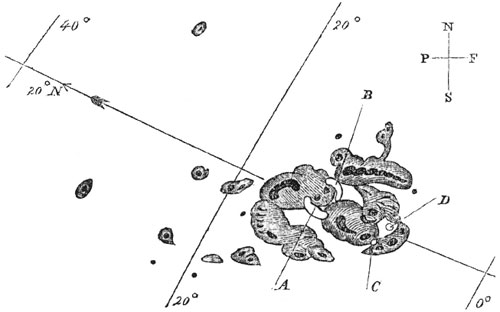
(Image Sources: NASA, Wikipedia.org, By NASA/JPL-Caltech - http://photojournal.jpl.nasa.gov/jpeg/PIA19672.jpg, Public Domain, https://commons.wikimedia.org/w/index.php?curid=40891664)
By Glenn A. Walsh
Reporting for SpaceWatchtower
NASA is launching
another rover to the Planet Mars next year, and they want your name
to be part of the spacecraft! Until this-coming Monday, September 30,
you can arrange to have your name etched on a microchip which will
be sent along on the voyage of the Mars 2020 Rover mission.
And,
after you register for the microchip, NASA will even give you a
souvenir “boarding pass” as well as “frequent flyer points!”
According to NASA, on the last Mars mission, Insight,
more than 2 million names of members of the general public flew to
Mars with the spacecraft, which provided those members of the public
about 300 million
frequent flyer miles / 500 million frequent flyer kilometers!
The
Mars 2020 Rover is a
robotic scientist weighing more than 2,300 pounds / 1,000 kilograms.
This latest mission to the Red Planet will search for signs of past
microbial life, characterize the planet's climate and geology,
collect samples for future return to Earth, and pave the way for
human exploration. It is scheduled to launch from the Cape Canaveral
Air Force Station (near the Kennedy Space Center in Florida) in July
of 2020, with a landing on Mars expected in February of 2021.
"As
we get ready to launch this historic Mars mission, we want everyone
to share in this journey of exploration," said Thomas Zurbuchen,
Associate Administrator for NASA's Science Mission Directorate (SMD)
in Washington, DC. "It’s an exciting time for NASA, as we
embark on this voyage to answer profound questions about our
neighboring planet, and even the origins of life itself.”
You
can add your name to the list of names to be etched on a microchip to
be included with the Mars 2020 Rover
mission, and down-load your souvenir “boarding pass,” at the
following Internet link. Remember, the deadline to submit your name
for this list is this-coming Monday, September 30, 11:59 p.m. Eastern Daylight Saving Time (EDT) / October 1, 3:59 Coordinated Universal Time (UTC) !!!
Internet Links to Additional Information ---
Mars 2020 Rover:
Link 1 >>> https://mars.jpl.nasa.gov/mars2020/
Link 2 >>> https://en.wikipedia.org/wiki/Mars_2020
Related Blog-Post ---
"Help Astronomers Name Large Kuiper Belt Asteroid." 2019 April 26.
Link >>> https://spacewatchtower.blogspot.com/2019/04/help-astronomers-name-large-kuiper-belt.html
Source: Glenn A. Walsh Reporting for SpaceWatchtower, a project of Friends of the Zeiss.
Thursday, 2019 September 26.
Like This Post? Please Share!
More Astronomy & Science News - SpaceWatchtower Twitter Feed:
Link >>> https://twitter.com/spacewatchtower
Astronomy & Science Links: Link >>> http://buhlplanetarium.tripod.com/#sciencelinks
Want to receive SpaceWatchtower blog posts in your in-box ?
Send request to < spacewatchtower@planetarium.cc >.
gaw
Glenn A. Walsh, Informal Science Educator & Communicator:
< http://buhlplanetarium2.tripod.com/weblog/spacewatchtower/gaw/ >
Electronic Mail: < gawalsh@planetarium.cc >
Project Director, Friends of the Zeiss: < http://buhlplanetarium.tripod.com/fotz/ >
SpaceWatchtower Editor / Author: < http://spacewatchtower.blogspot.com/ >
Formerly Astronomical Observatory Coordinator & Planetarium Lecturer, original Buhl Planetarium & Institute of Popular Science (a.k.a. Buhl Science Center), Pittsburgh's science & technology museum from 1939 to 1991.
Formerly Trustee, Andrew Carnegie Free Library and Music Hall, Pittsburgh suburb of Carnegie, Pennsylvania.
Author of History Web Sites on the Internet --
* Buhl Planetarium, Pittsburgh:
< http://www.planetarium.
* Adler Planetarium, Chicago:
< http://adlerplanetarium.
* Astronomer, Educator, Optician John A. Brashear:
< http://johnbrashear.tripod.com >
* Andrew Carnegie & Carnegie Libraries:
< http://www.andrewcarnegie.

